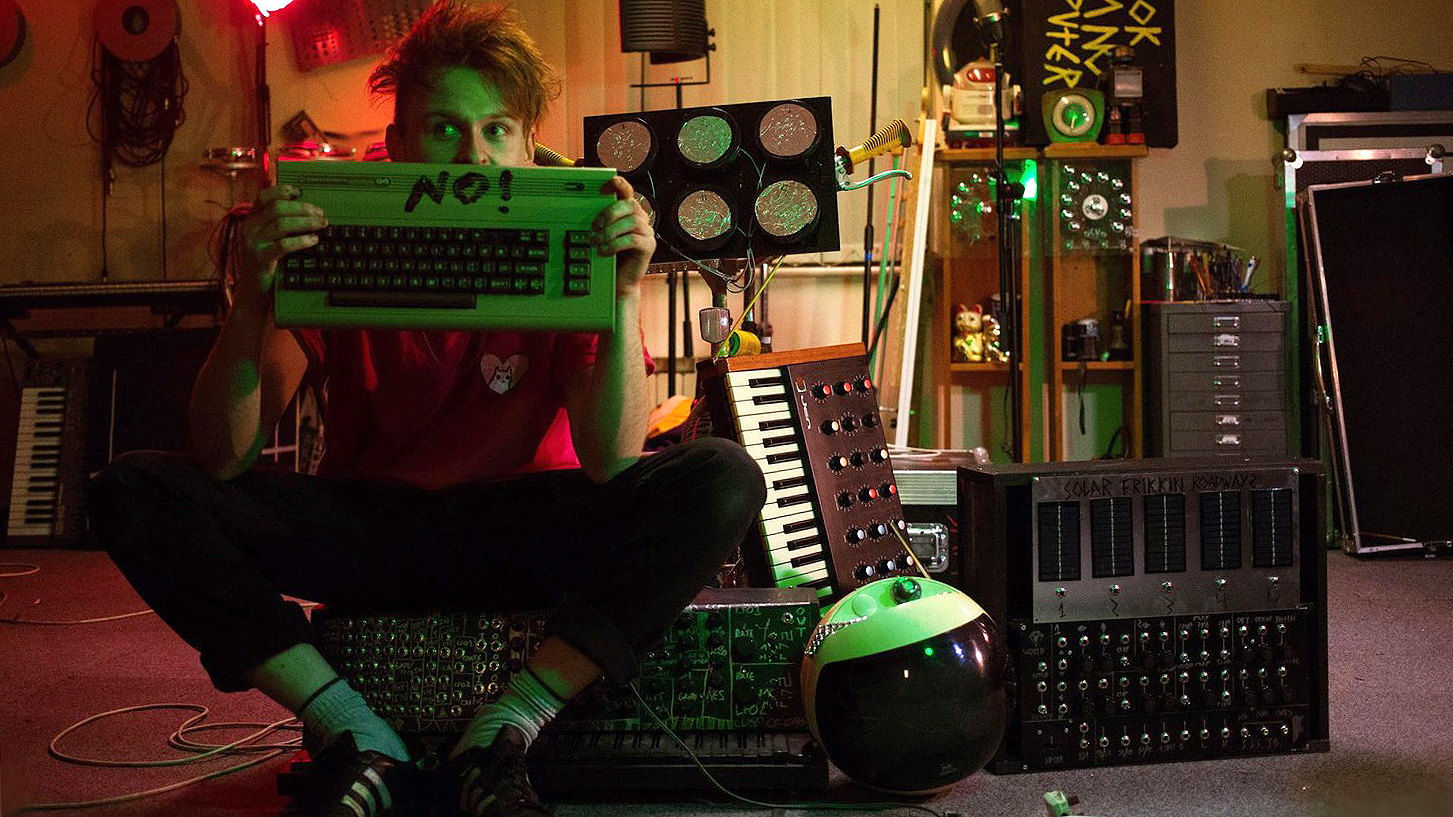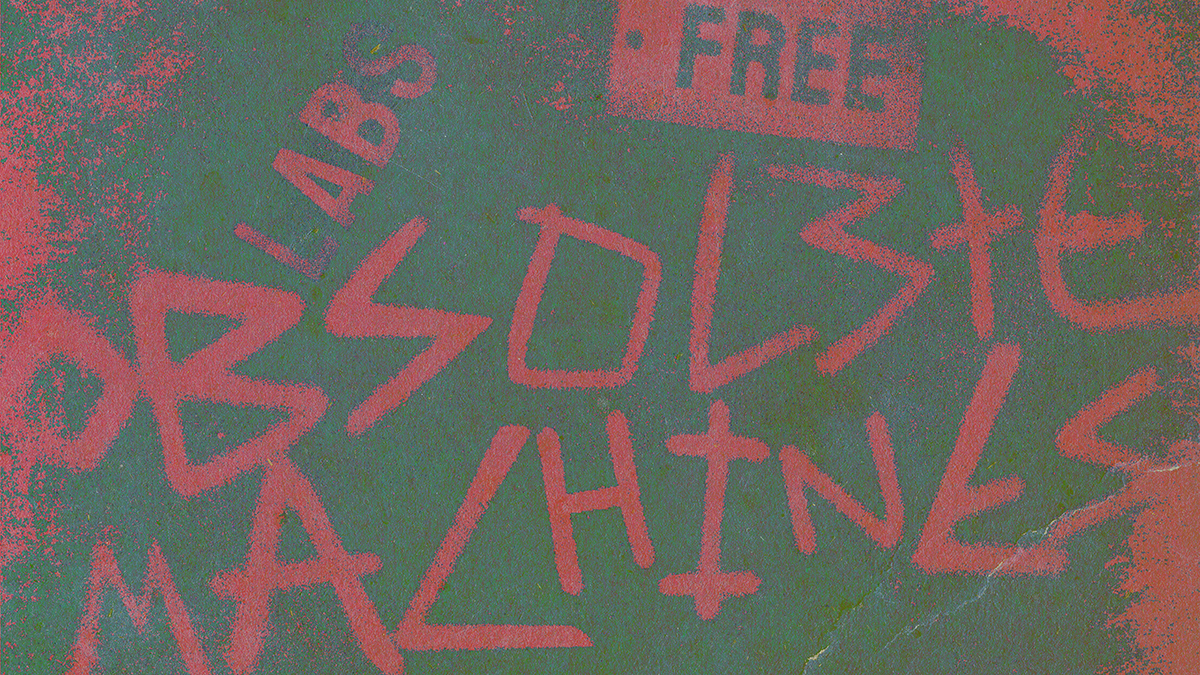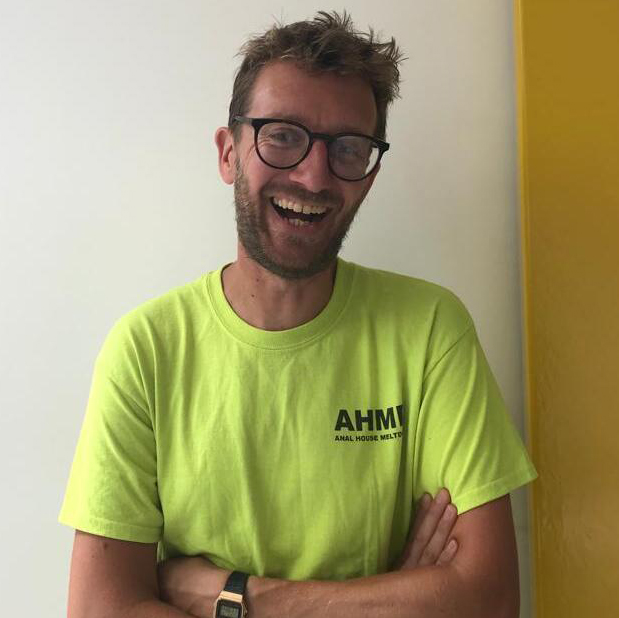Furby organ, lightsaber theremin and the 1000-oscillator synth: Look Mum No Computer on his 7 craziest musical inventions
Sam Battle talks us through seven of his most absurd and extraordinary musical machines

‘One man's trash is another man's treasure’ could be a fitting maxim for musical inventor Sam Battle, AKA Look Mum No Computer. From a furby organ to a flamethrowing Henry hoover, Sam uses whatever he can get his hands on to create unique machines that make stomping, off-the-wall electronic music.
Talking from his workshop in Ramsgate in front of a towering wall of parts and tools, this electronics enthusiast is clearly obsessed by battered old gear and outdated equipment, not the latest shiny gadgets.
“As technology progresses, it doesn't necessarily improve,” Sam says of his approach. “It just has more features and functions which make it more cumbersome and tricky to use. I like older machines as they have less - they are built for purpose. You turn on an eighties computer and it does what it was built to do. You turn on a modern computer and it’s just full of unnecessary rubbish.”
Sam’s approach to making what he describes as “random crap” stemmed from a childhood surrounded by Lego and Meccano before becoming obsessed with the guitar. After discovering that Queen’s bassist John Deacon built his own equipment, Sam decided to follow a similar path and try his hand at making an effects pedal. He surprised himself by creating something that worked and enhanced his sound.
“It took me a few months but the feeling of having a working pedal I’d made out of random stuff myself - I didn’t get that magic feeling from anything else,” he says.
Sam has never looked back, building an array of out there pieces of kit and launching his own YouTube channel (currently at 569k followers and counting) to document his processes back in 2016.

When he’s not dreaming up bizarre musical devices or releasing his own tracks - including the recent single Handbook on How to Stay Alive, an end-of-the-world banger about a future that may never come - Sam is also behind This Museum is Not Obsolete, a space that celebrates vintage analogue devices and obsolete technology. His musical process is one of improvisation, with song structures emerging from live sessions, and lyrics born out of whatever he “empties” from his mind when wandering outside the studio or workshop.
Get the MusicRadar Newsletter
Want all the hottest music and gear news, reviews, deals, features and more, direct to your inbox? Sign up here.
“I’m very pleased that I’ve found an outlet for my creativity,” he says. “It’s good to have variety in the world and everyone has their own minds and thinks different things. Mine is a messy hodgepodge of trying to make random things do what they’re not supposed to.”
Sam’s endeavours have seen him work through an array of increasingly off-the-wall experiments. His relationship with his work is a personal yet pragmatic one, with many pieces often conceived in order to fix a problem. Although some can be viewed in various museums, many of Sam’s later experiments cannibalised previous projects for parts. Are there any he’s most proud of, though?
“I don’t really look at them as favourites,” he laughs. “By the time I finish them, I’m sick of them, as they’ve been so frigging annoying to make. I can’t remember making some of them, and it often feels like someone else built them. I talk to other makers and they say a similar thing. You build these machines, and it’s for other people to offer their thoughts and work out how good they are.”
With his new track now released and more madcap projects stacking up, here Sam talks about some of his craziest experiments and how they came into being…
1. Sega Megadrive Synth
“I came up with the idea when I played a gig in Bristol at Rough Trade. I walked past a gaming shop and saw a Sega Master System. I thought there might already be a programme that you could plug in so you can play from MIDI when using it - and there was.
“Then I thought it would be cool if all of these parameters could be broken out into different buttons. Then I decided it would be great to take the next step up and use the Megadrive. That’s how it happened and it caught my focus for a few weeks. I was so into it, I was even working on it on Christmas Day that year.
“I’m not really into gaming despite this. I played a bit of Colin Mcrae Rally when I was a kid but I usually sit down in front of a game and quickly get bored.”
2. Game Boy Megamachine
“Having said that, I was obsessed with Pokemon on the Game Boy and it kind of took over my life as a kid. The idea that there was such a little world living inside a Game Boy was mad, you could fit so much into this small device.
“That led me to discovering this programme called LSDJ (Little Sound DJ), a sequencing app that lets you make four-track music with the GameBoy sound chip. I got really into it, and that spun off into the triple Game Boy oscillator on a modular synth panel. That was one of the first videos I did and I thought I should build a bigger machine out of Game Boys. It’s a nightmare to maintain as there are thousands and thousands of wires.
“I really like the original model as an object. They are big, chunky and have a real presence. As far as I’m concerned, everything is a tool to use. I love the idea of limitations being put in place by technology too. Having everything that is ever possible at your fingertips - like you do with so many plugins and new tech - isn’t necessarily a good thing for creatives.”
3. 1000-oscillator Megadrone
“The 1000-oscillator Megadrone was an idea that just spiralled. I started making a super-simple machine which would buzz with as few components as possible. I made one with five, then 100, then the next logical step was with 1000. I spent all this time talking about it - which is something I try to avoid, I like to think of myself as a doer, not a talker - then sat down and started designing the circuit board.
“I went for printed circuit board design due to the size of the soldering job. It was in lockdown, so I had time, but it was so boring. That was the challenge, I was just soldering for hours. But it’s complete now, it still works and hasn’t needed much maintenance. It never goes out of tune, as the oscillator circuits aren’t heat sensitive. It means they don’t get hot, so they never wander at all.”
4. Flamethrower Organ
“What a silly idea. Red Bull got in contact and offered me some money to help build it. I’d never worked with fire before, so I pretended that I knew what I was doing. I was asked if I was going to work with a professional and I was like ‘yeah, sure’.
“My parents were away on holiday so I went there for a couple of weeks and started experimenting with fire in their driveway, figuring out how it worked with a gas canister and firing out flames. After a couple of weeks I had built the organ from plumbing supplies. It was all copper, which is why it cost so much money. I did try with a church organ pipe but it melted the pipe and it fell off.
“Copper is heat resistant, so it works really well in this setting. But the organ was another machine I didn’t make particularly well as I wasn’t experienced with fire or flames. It sort of works, but there are a lot of leaks. It’s a bit dangerous. I guess you just need to be aware of the risks.”
5. Gibson Les Paul Synth
“This was one of my first ever electronic projects I put together back in 2010. I saved up for the guitar by working as a pot washer/Sunday chef/microwave technician. I saved up for a Les Paul to play in the band I was in at the time. Then I thought it would be cool to put a bunch of holes in my new instrument to build a keyboard into it.
“It was an eBay job so I can’t remember exactly how much it cost. Everyone around me was like ‘you’re fucking stupid, you’ve just got it!’ But I chiselled out the back, drilled in a bunch of holes for some switches I bought from Maplins.
“It took ages to build this keyboard into it as I didn’t know what I was doing and it took a long while to solder. I used the old parts from a MIDI keyboard which I popped inside it, then filmed a video a few years later after I found it in my loft. I’ve got to find it again - it’s my favourite guitar.”
6. Beer Helmet Electric Kazoo
“This is very similar to the power glove and lightsaber theremin, which I think are fairly simple projects. You find an air pressure sensor, then work out how you make that musical. The more pressure you put on it, the more voltage comes out of it.
“You just blow in it, the harder you blow, the higher the note goes. It’s actually surprisingly easy to play, I didn’t think it would be as useful as it is. What is interesting is how it’s not like a flute where the harder you blow, the louder it gets. Instead, it’s all about getting the note higher. I don’t know if any other instruments actually do that.”
7. Synth Bikes
“I’ve made three synth bike projects. The first one was taken apart completely to make the third. The first had a switch on the back of the wheel that would hit my debit card which was taped onto the spokes. So every time it passed it, it would flick the switch and tick over a modular synth.
“The next one was a Raleigh Chopper, and I built a whole synth on the front. You could actually cycle this, then I took it to a gig a few years ago, someone was drunk and fell off it. It got smashed up and I’ve not fixed it since. But that’s what it’s all about, letting people experience these things too.
“I might build another one, although I’m not really sure yet. When I started making loads of new instruments and projects, I’d borrow components from older inventions and that turned out to be a big mistake as those projects are now beyond repair.
“I get asked if I still have certain things - and I’m like, no, I took it apart to make something else. I try not to do that anymore. Still, if I lose everything tomorrow, it doesn’t matter: I’m all about trying to focus on what happens next.”
Visit Sam's website to follow future projects or support his work on Patreon.


Jim Ottewill is an author and freelance music journalist with more than a decade of experience writing for the likes of Mixmag, FACT, Resident Advisor, Hyponik, Music Tech and MusicRadar. Alongside journalism, Jim's dalliances in dance music include partying everywhere from cutlery factories in South Yorkshire to warehouses in Portland Oregon. As a distinctly small-time DJ, he's played records to people in a variety of places stretching from Sheffield to Berlin, broadcast on Soho Radio and promoted early gigs from the likes of the Arctic Monkeys and more.










